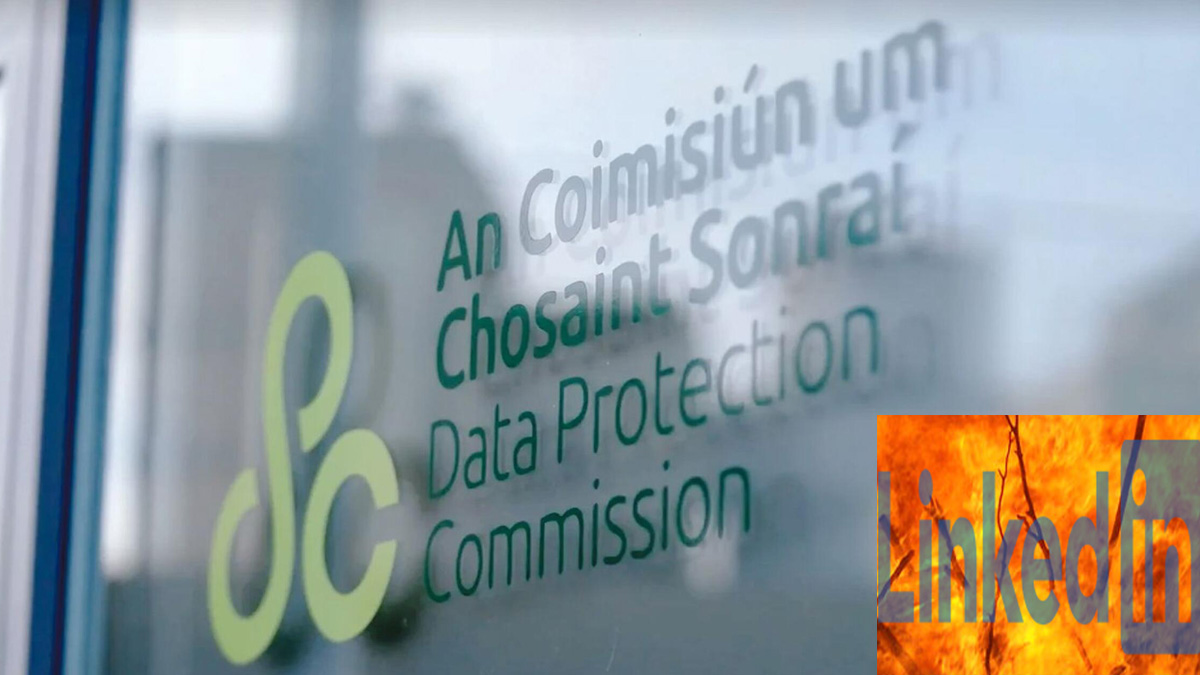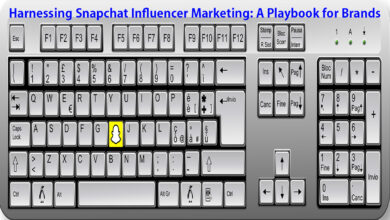Irish Data Protection Commission: Firm stance against LinkedIn

In a significant ruling, Ireland’s Data Protection Commission (DPC) has taken a firm stand against LinkedIn. The social media giant, owned by Microsoft, faced scrutiny for its handling of user data in Europe.
The crux of the issue? LinkedIn allegedly failed to obtain “informed” and “freely given” consent from its users before sharing their personal data with third parties for targeted advertising. This lack of transparency raises serious questions about user privacy and corporate responsibility.
As a result, the DPC imposed a hefty fine of €310 million ($335 million) on LinkedIn. This penalty serves as a stark reminder that companies must prioritize user consent and adhere to strict data protection regulations.
Interestingly, this fine is lower than the $425 million Microsoft had set aside last year in anticipation of potential fallout from LinkedIn’s data practices. It indicates that while the consequences are severe, they could have been even more damaging.
What does this mean for LinkedIn moving forward? The company is now required to overhaul its data practices to ensure compliance with European regulations. This includes implementing clearer consent mechanisms and enhancing transparency around how user data is utilized.
For users, this ruling highlights the importance of being vigilant about privacy settings on platforms like LinkedIn. Always read the fine print and understand what you’re consenting to when you share your information online.
This incident also underscores a broader trend in digital marketing: the increasing scrutiny over how companies handle personal data. As regulatory bodies become more proactive, businesses must adapt or risk facing substantial penalties.
LinkedIn’s situation serves as a cautionary tale for all tech companies operating in Europe. User trust is paramount, and maintaining it requires clear communication and ethical practices regarding personal data.
As we move forward in an increasingly digital world, let this be a reminder: informed consent isn’t just good practice; it’s essential for building lasting relationships with users.
Understanding GDPR Consent: The LinkedIn Case
The General Data Protection Regulation (GDPR) is a crucial framework designed to protect personal data in the European Union. One of its key components is the requirement for consent when processing user data. However, what happens when that consent isn’t truly valid?
The Role of Consent in GDPR
Consent is one of several legal bases for processing personal data under GDPR. For consent to be considered valid, it must be:
- Freely given: Users should have a genuine choice.
- Sufficiently informed: Clear information about what they are consenting to must be provided.
- Specific: Consent should relate to specific purposes.
- Unambiguous: There should be no doubt about the user’s intention.
The LinkedIn Controversy
LinkedIn faced scrutiny over its use of user data for behavioral analysis and targeted advertising. The Irish Data Protection Commission (DPC) found that LinkedIn’s approach did not meet the stringent requirements set by GDPR.
The DPC concluded that users’ consent was not “freely given, sufficiently informed, or specific.” This raises significant questions about how companies interpret and implement consent mechanisms.
Background of the Case
This case began in 2018 when La Quadrature du Net, a French digital civil rights organization, filed a complaint with CNIL, France’s supervisory authority. Due to jurisdictional complexities, the DPC took over as the lead authority on this matter.
The implications are profound. If major platforms like LinkedIn fail to secure proper consent, it undermines user trust and violates fundamental rights established by GDPR.
What This Means for Users and Companies
For users, this case highlights the importance of understanding their rights regarding personal data. They should feel empowered to question how their information is used and demand transparency from companies.
For businesses, especially those operating in Europe, this serves as a critical reminder. Compliance with GDPR isn’t just about ticking boxes; it’s about fostering genuine relationships with users based on trust and respect.
Understanding User Consent: A Closer Look at European Data Law
In today’s digital landscape, user consent is crucial. When creating an account, many users encounter a common hurdle: the requirement to accept terms of use, cookies, and privacy policies. This process often feels like a maze.
Once users click that acceptance button, they can finally navigate through a nested menu. Here’s where it gets tricky. To manage their advertising preferences, they must go to You > Preferences & Privacy > Ads. Only then can they disable various categories of data used for advertising.
But what does European data law say about this? According to regulations, users must be informed of their rights before giving consent. They should know they have the right to withdraw consent at any time.
This means:
- Clear Information: Users need straightforward explanations about what they’re consenting to.
- Easy Access: The option to withdraw consent should be easily accessible—not hidden in layers of menus.
- Empowerment: Users should feel empowered to control their data without navigating complex settings.
The current system can leave many feeling frustrated and uninformed. It’s essential for companies to align with these legal requirements while providing transparency and ease of use.
In conclusion, respecting user consent isn’t just about compliance; it’s about building trust. Clear communication and user-friendly design are key steps toward achieving this goal in the digital age.
Microsoft and GDPR: A Standoff in Digital Advertising
Recently, Microsoft found itself in the spotlight regarding its compliance with the General Data Protection Regulation (GDPR). The tech giant firmly denies any wrongdoing, asserting that it has adhered to GDPR guidelines.
The Background
The controversy stems from claims dating back to 2018. These allegations focus on Microsoft’s digital advertising practices within the European Union. The company insists that it has been compliant with GDPR since its inception.
Microsoft’s Response
In a statement, Microsoft emphasized its intention to “defend itself vigorously.” They believe their advertising efforts do not violate any regulations. However, they are also committed to aligning their practices with the recent decisions made by the Data Protection Commission (DPC).
The Impact of LinkedIn Premium on Microsoft’s Revenue Landscape
LinkedIn Premium is more than just a subscription service. According to COO Daniel Shapero, it generates an impressive $1.7 billion annually. This figure highlights the platform’s significance within the broader Microsoft ecosystem.
Recently, LinkedIn made headlines with its €310 million ($335 million) acquisition. While this may seem substantial, it’s relatively small when viewed against Microsoft’s overall financial backdrop. For context, Microsoft reported a staggering $211 billion in revenue for FY 2023, alongside over $88 billion in operating income.
A Drop in the Ocean
When you consider these numbers, the €310 million investment feels like a drop in the ocean. For a tech giant like Microsoft, which continues to expand its portfolio and innovate across various sectors, this acquisition aligns perfectly with its strategy.
Why LinkedIn Matters
LinkedIn isn’t just another social media platform; it serves as a vital tool for professionals worldwide. The Premium unit enhances user experience by offering features like advanced search options and insights into job postings. This creates value not only for individual users but also for businesses looking to attract top talent.
Future Prospects
As Microsoft integrates LinkedIn more deeply into its offerings, we can expect further growth from this unit. The potential for cross-promotion with other Microsoft services could amplify revenue streams even more.







